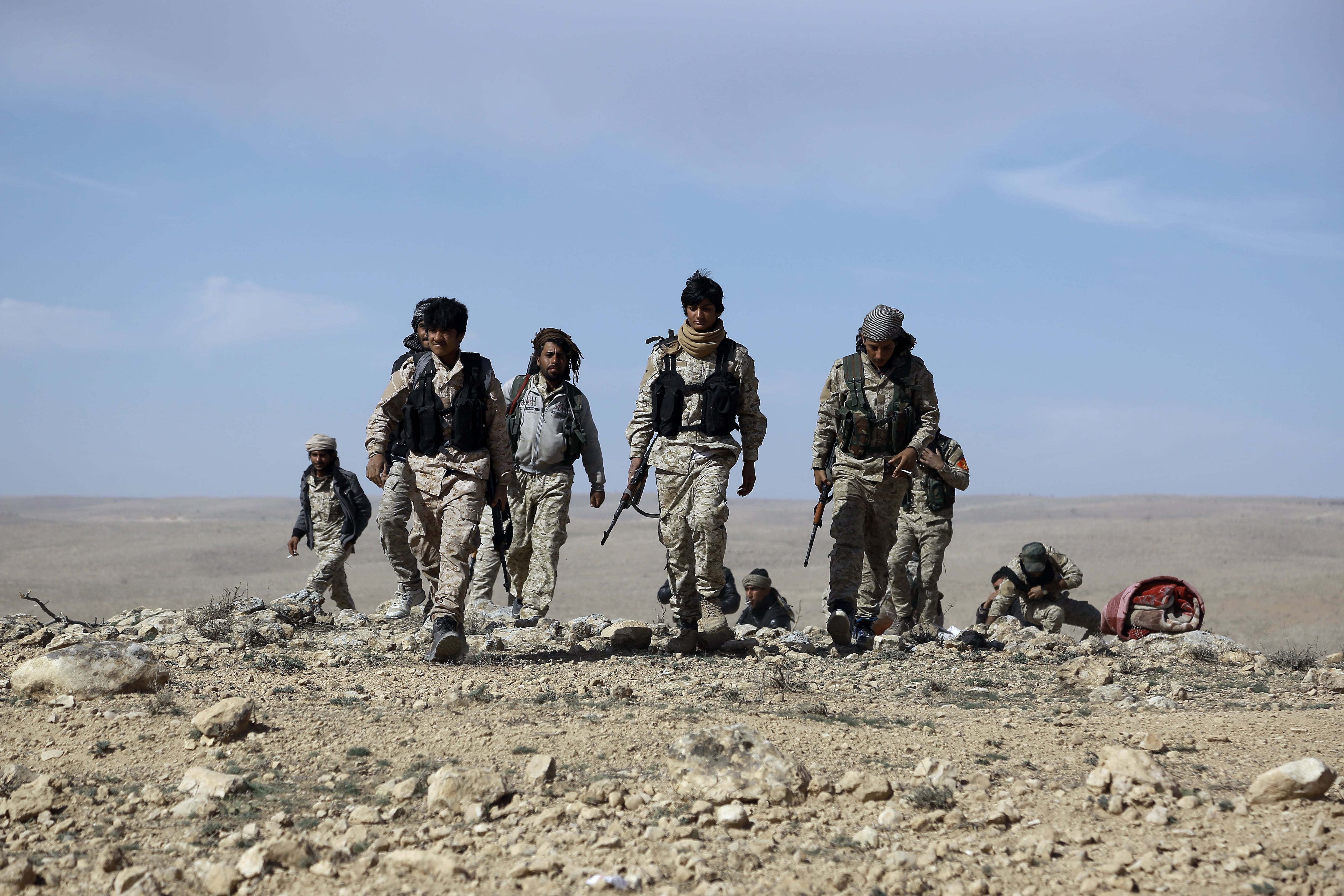Islamic State resistance "melted" away in the strategically important Syrian city of Shaddadi, giving a rag-tag force of Syrian rebels — backed by U.S. air power and special operations troops on the ground — a key victory after only a few days of combat.
"We expected a tougher fight inside the city," said Army Col. Christopher Garver, a U.S. Defense Department spokesman in Baghdad.
"All told the [Syrian Democratic Forces] overwhelmed the [Islamic State] force around Shaddadi and isolated the city in just six days, which was much faster than the SDF had estimated for the operation," Garver said.
The seizure of Shaddadi was the biggest victory to date for the SDF, a coalition of Syrian rebel groups stitched together and armed by the U.S. military. Defense Secretary Ash Carter pointed to the operation as validation of the Pentagon's current strategy.
"This is just the most recent example of how we're effectively enabling and partnering with local forces to help deal ISIL a lasting defeat," Carter said during testimony on Capitol Hill. Seizing the town will "sever the last major northern artery between Raqqa and Mosul," he said.
The Syrian forces were backed by dozens of U.S. special operations troops who have been in Syria for several months to help coordinate the array of local militias fighting the Islamic State, also known as ISIS or ISIL.
Those special forces were in the Shaddadi area to advise and assist the SDF combat units, but the Americans remained several miles away from the front-line fighting, Garver said.
"They are not down on the fight" Garver said. "They are on a more stationary headquarters where they can help plan command-and-control."
"We're conducting air strikes. We're providing intelligence. We're providing planning assistance. We're coordinating, especially when it comes to putting steel on targets from the aircraft, to make sure we're hitting the right folks and not anybody else," he said.
The operation in Shaddadi began on Feb. 15 with six U.S. airstrikes. That was followed the next day by the SDF's "three-pronged ground movement from the north toward the city," Garver said.
The fiercest resistance came on Feb. 20 as the SDF maneuvered to connect their eastern and western flanks and take the city center.
ISIS fought back with truck bombs, rockets, and small-arms and sniper fire, Garver said.
About 20 SDF fighters were killed in the six-day operation, Garver said.
Throughout the weeklong fight, U.S. and coalition aircraft hit 80 targets, including ISIS trucks, heavy artillery and fighting positions.
A couple days later the ISIS resistance "melted" and the SDF took control of the entire city on Feb. 22, Garver said.
"Currently the SDF is moving through the city to ensure it's clear of any remnants of ISIL. Clearing operations are moving quickly and estimated to be more than 75 percent complete, " Garver said.
Similar to Sinjar in Iraq, which ISIS lost in December, Shadadi was a key stop along the direct route between Mosul and Raqqa, the group's strongholds in Iraq and Syria, respectively. To move supplies between the two regions, ISIS militants will have to use slower, more circuitous or unpaved routes.
"The loss of Shadadi," Garver said, "increases the time, difficulty and risk to [ISIS] as it attempts to move between Syria and Iraq.

The Syrian Defense Forces, whose fighters are seen here on the outskirts of Shaddadi on Feb. 19, is an alliance dominated by the Kurdish People's Protection Units, or YPG.
Photo Credit: Delil Souleiman, AFP/Getty Images
Andrew Tilghman is the executive editor for Military Times. He is a former Military Times Pentagon reporter and served as a Middle East correspondent for the Stars and Stripes. Before covering the military, he worked as a reporter for the Houston Chronicle in Texas, the Albany Times Union in New York and The Associated Press in Milwaukee.




